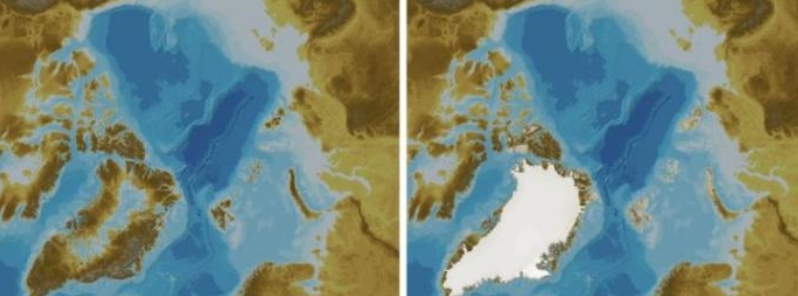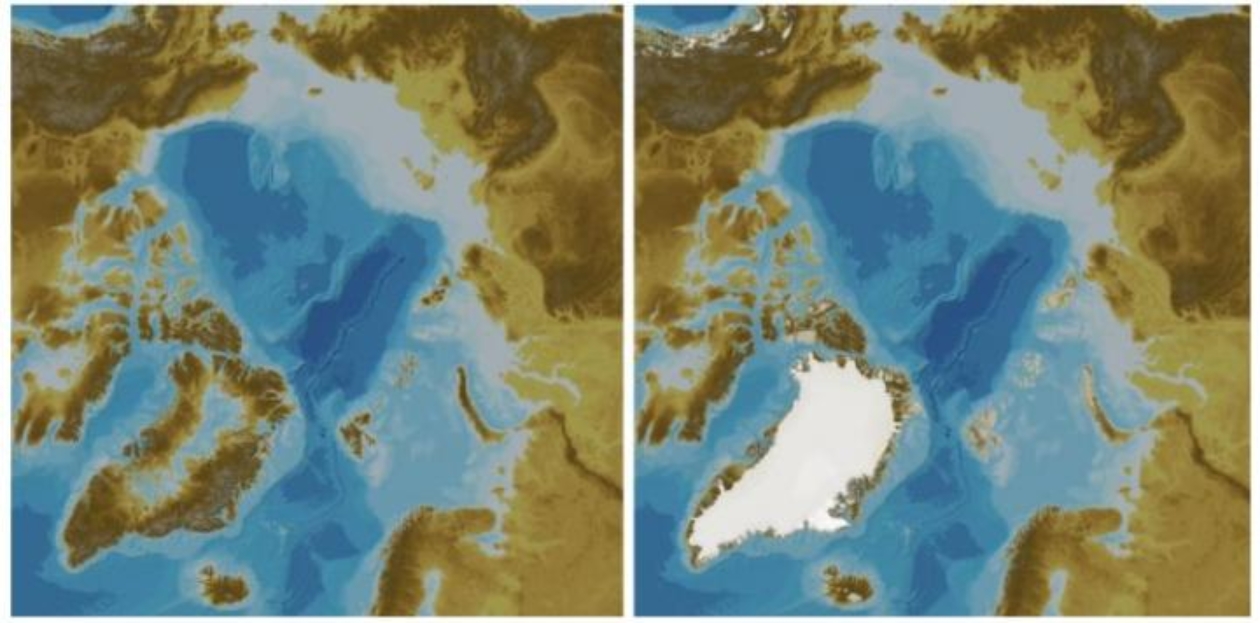Most detailed seafloor depth map of Arctic Ocean released

An international team of researchers released the most detailed seafloor depth map of the Arctic Ocean. The map, which is the 4.0 version of the International Bathymetric Chart of the Arctic Ocean (IBCAO), expands up to 19.6 percent of the submarine surface mapped in previous versions.
Details of the new depth map of the Arctic Ocean have been published in a new study, showing Version 4.0 of the IBCAO initiative that began in 1997 in Saint Petersburg Russia.
"The 4.0 IBCAO map is this year's contribution to the Nippon Foundation-GEBCO Seabed 2030, whose objective is to map all seas and oceans in the world by 2030," said lead author Martin Jakobsson, professor at Sweden's Stockholm University.
Professor Miquel Canals, head of the Consolidated Research Group on Marine Sciences of the UB, said, "The potential difficulty for the current science campaigns in the Arctic is the access to places which are permanently covered by marine ice, and the short duration of the navigation period."
"The new cartography has a volume with a higher and better resolution data than the previous versions, and it includes marine regions which were unknown to date," Canals said.
"This results from the efforts made by an international collaborative of many institutions and researchers who provided their scientific data to reach a common objective: discovering the depths of the Arctic Ocean."
Scientists used the same method used in the submarine study in other regions of the ocean to conduct the IBCAO 4.0 map. The compounds of the new map were gathered through the most advanced multibeam bathymetry systems that exist.

Image credit: Stockholm University Sweden
"Regarding the data processing and fusion with a new Mallat algorithm– new techniques were added, and provided an excellent result," Canals stated.
Bathymetrical data is relevant in other fields of polar science, such as the study of the path of ocean currents, and therefore, the distribution of the heat, ice decline, effect of inflowing warm waters on tidewater glaciers, and the stability of ice stream and outlet glaciers on the seabed.
"One of the most spectacular formations in the Arctic ocean floors is the Lomonosov Ridge, a geological element with more than 1,600 kilometers of length, which connects Northern Greenland and Siberia and crosses the ocean leaving deep basins in both sides," Canals added.
"The most recent cartography studies carried out with ice breakers revealed the presence of thresholds that influence the exchange of water between both basins, and anchoring marks in ice platforms on the ridge."
Reference
"The International Bathymetric Chart of the Arctic Ocean Version 4.0" – Jakobsson, M. et al. – Scientific Data – http://dx.doi.org/10.1038/s41597-020-0520-9 – OPEN ACCESS
Abstract
Bathymetry (seafloor depth), is a critical parameter providing the geospatial context for a multitude of marine scientific studies. Since 1997, the International Bathymetric Chart of the Arctic Ocean (IBCAO) has been the authoritative source of bathymetry for the Arctic Ocean. IBCAO has merged its efforts with the Nippon Foundation-GEBCO-Seabed 2030 Project, with the goal of mapping all of the oceans by 2030. Here we present the latest version (IBCAO Ver. 4.0), with more than twice the resolution (200 × 200 m versus 500 × 500 m) and with individual depth soundings constraining three times more area of the Arctic Ocean (∼19.8% versus 6.7%), than the previous IBCAO Ver. 3.0 released in 2012. Modern multibeam bathymetry comprises ∼14.3% in Ver. 4.0 compared to ∼5.4% in Ver. 3.0. Thus, the new IBCAO Ver. 4.0 has substantially more seafloor morphological information that offers new insights into a range of submarine features and processes; for example, the improved portrayal of Greenland fjords better serves predictive modeling of the fate of the Greenland Ice Sheet.
Featured image credit: Stockholm University Sweden

Commenting rules and guidelines
We value the thoughts and opinions of our readers and welcome healthy discussions on our website. In order to maintain a respectful and positive community, we ask that all commenters follow these rules.